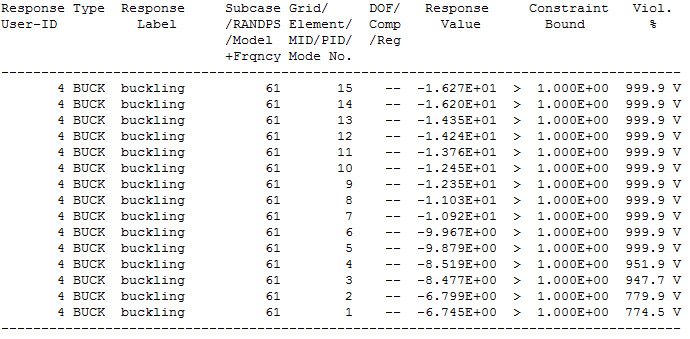Hello,
I've running a topology optimization with a buckling constrain (which is possible, since I'm working on a shell-element). The results are not satisfying, because of two practical problems:
1) I need to specify very large frequency ranges for buckling modes, since the optimization the design space will use a higher thickness then the optimization results. This is making it difficult to find buckling modes.
2) The solver returns a negative response value for the buckling factors. How is this even mathematically/physically possible?
See attachment:
<?xml version="1.0" encoding="UTF-8"?>
I would really appreciate help on this topic - thank you!
Galerkin